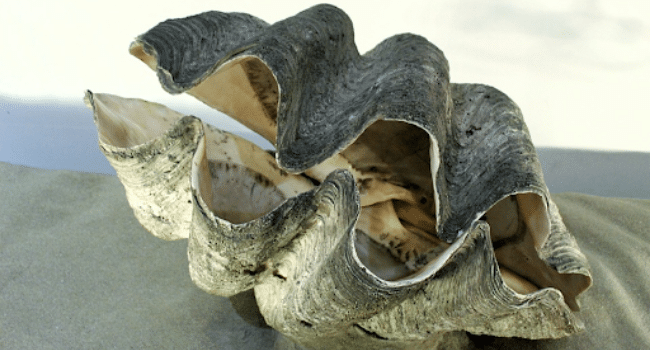Table of Contents
Giant clams are one of Earth’s most wondrous creatures. Did you know that there are twelve identified giant clams species in the Coral Triangle, an area in the western Pacific rich in marine life, and eight species could be found in the Philippines? The country has spent around thirty years nursing and restoring the legendary giant clams (some can even grow to 500 kilograms and live up to a century or more!). Giant clams are hermaphrodites; they are both male and female. At eight years of age, giant clams become male-mature, and at their tenth year, they start to display both male and female traits.
The largest known species is Tridacna gigas, the second-heaviest invertebrate (any cold-blooded animal with no backbone) on Earth, which can weigh up to half a ton and have shells measuring more than a meter. Giant clams filter-feed plankton, so they also derive energy from photosynthesis and must live in shallow, marine habitats where light can reach, such as seagrass meadows or coral reefs. Therefore, they should also be protected with as much enthusiasm as protecting coral reefs! Some giant clam protection and nursing efforts include “Reef-orestation,” featuring giant clams in Anvaya Cove in the Philippines. Read on to learn more about how giant clams serve an invaluable purpose in our planet’s waters.
1. They are boons to marine biodiversity and marine life density.
When any living clam’s shell is open, you can see a frill of flesh along the shell edges. The fleshy frill is called the mantle, the part of the clam that houses the internal organs. Different clams can have different-colored mantles because they have different patterns of iridocytes, special cells that function to funnel light onto the algae living in the clam’s mantle. The mantle of the T. gigas, for example, is dark yellow because of the algae, Symbiodinium.
Through photosynthesis, the algae can provide energy to the clams. The symbiosis between giant clams and the algae starts when the giant clams are just baby clams, around four days after fertilization. Even when the giant clams are still tiny larvae, they can already absorb the algae from the surrounding waters. Also, when giant clams release millions of their eggs in the water, an increased amount of available food in the water and algae are sure to follow.
2. They help provide shelter for fish and other forms of marine life.
Certain types of fish defend the algae patches that grow outside giant clams’ shells against intruders and are careful not to consume all the algae so that it can regrow – damselfish claim patches of those nutritious algae growing outside the giant clams’ shells. The more space a damselfish has for its algal farm, the better off it is. At times, they even trim the edges of the clam’s mantle to increase the space available for algal farming.
Similar to corals, giant clams provide three-dimensional structures as hiding and hunting spaces for many fishes and invertebrates. Giant clams can provide habitats or homes for many sea creatures in, on, and around their shells. For example, juvenile parrotfish can hide inside the mantle of a T. gigas. While parrotfish are herbivorous, other types of fish, such as pufferfish, can occasionally nibble on the clam’s mantle.
Author’s Bio:
Angelo Castelda is a freelance writer and digital nomad who loves to travel around Asia. He finds comfort in working around the beautiful islands, mountains, and beaches of the Philippines, which is where he usually draws inspiration when writing about travel, lifestyle, and real estate.
Read more on KulFiy
Traveling with Pets within the US
Dolphin Discovery is the only park with the AZA accreditation in Punta Cana
Complex Reality & Consumerism Hidden in Animal Crossing New Horizons
